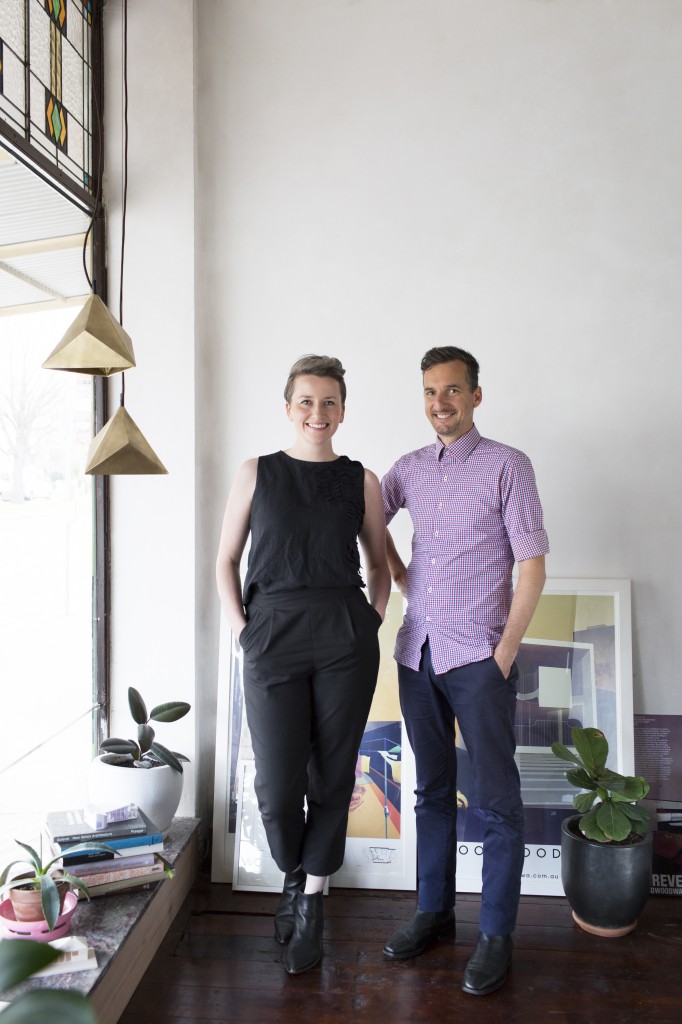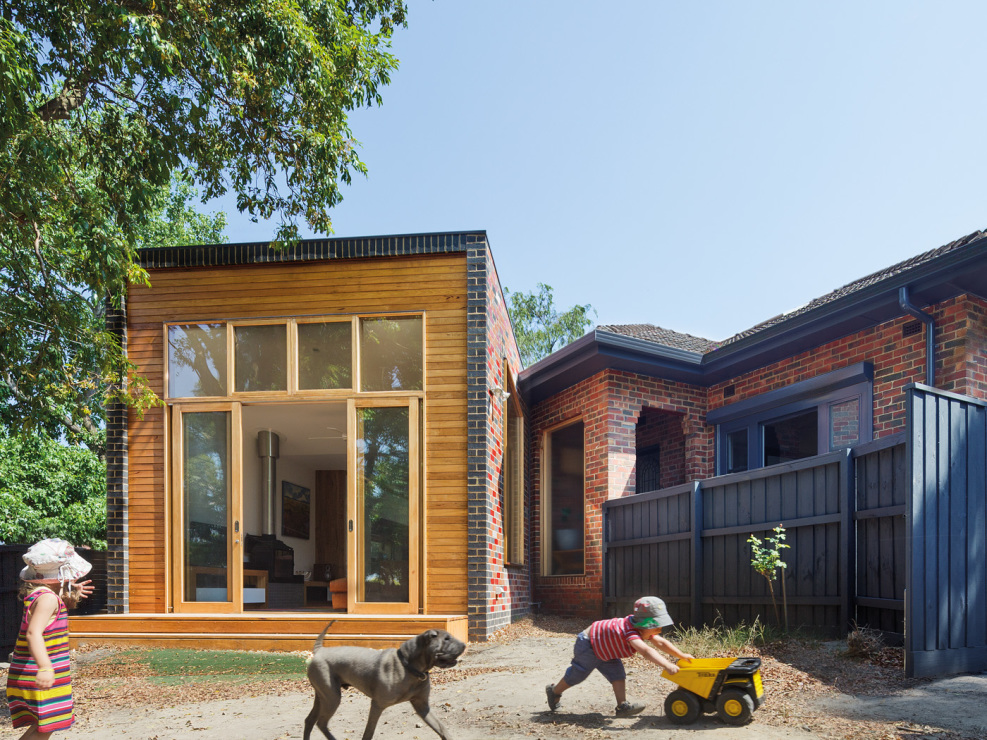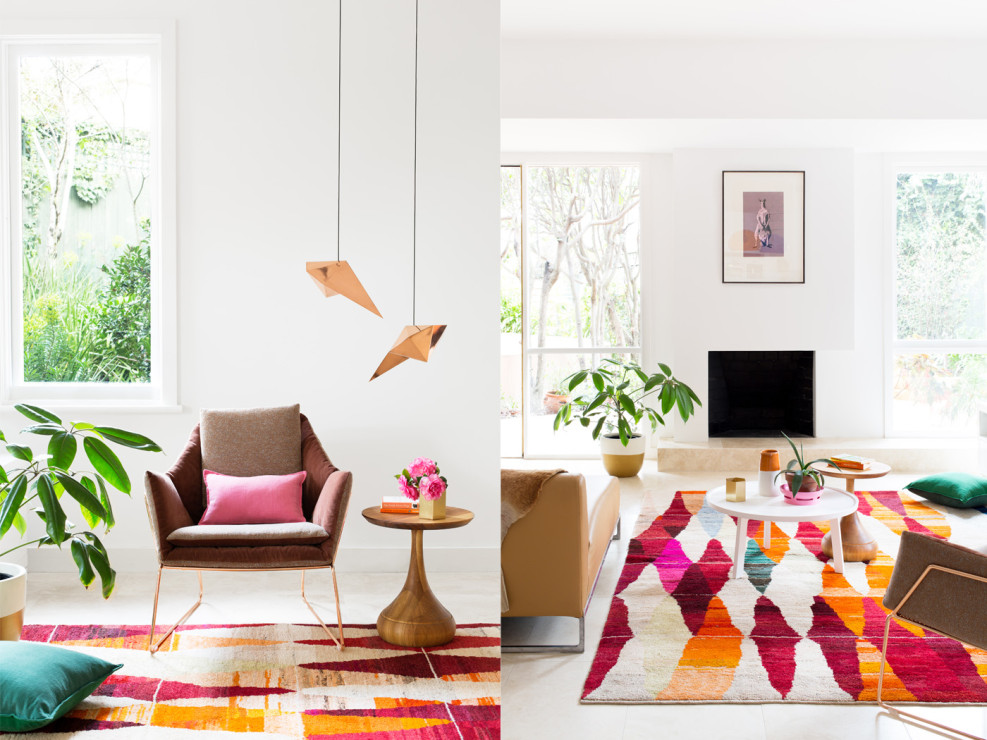Studio Visit: Monique Woodward, architect
 It’s not often on just hearing a name that you get such a strong sense of the dynamism behind a creative duo, but this is just the case with WOWOWA (implied!) whose co-founders Monique and Scott Woodward forge a next-generation approach to architectural practice with a kind of positive charge often missing in professional creative circles.
It’s not often on just hearing a name that you get such a strong sense of the dynamism behind a creative duo, but this is just the case with WOWOWA (implied!) whose co-founders Monique and Scott Woodward forge a next-generation approach to architectural practice with a kind of positive charge often missing in professional creative circles.
In WOWOWA Architecture & Interiors, the pair have created the kind of practice they always wanted to work in, one that prioritises artistic expression, teaching and advocacy as essential to ongoing creativity. Alongside partner Scott, Monique is a vocal advocate for improved living standards and accessibility of quality design as a tenet of modern Australian culture.
From their glittering Tin & Ed business cards to the bold glazed red brick façade of the Finn House, WOWOWA is unafraid of a playful nod to the kitch, and their declaration of a radical postmodernist style is one beautifully tailored to bring a fresh optimism to the architecture of the everyday – the humble family home. We spoke to Monique at WOWOWA’s shopfront studio in Melbourne’s leafy Carlton North about her passion for celebrating Australian culture and why more creatives should embrace the power of marketing.
As an emerging practice, WOWOWA has a strong brand and clear creative directive – what inspired that focus and how has it shaped the way you practice?
One of the biggest challenges we faced initially as a fledgling but ambitious creative practice was acknowledging that even if you were the greatest architect in the world, you need to be able to run a sustainable business to keep up that practice, and to successfully market yourself is a big part of that business’ success.
I undertook a marketing course at the local TAFE and we engaged a business coach, really immersed ourselves in marketing, read a lot of business and marketing literature alongside our favourite design journals.
We quickly realised that what we were saying to the world though our marketing - that we could do anything – was out of touch with the reality of our work at the moment. Whilst we do have a few small civic projects on the go and really enjoy the possibilities of larger scale projects, our current built reality is residential. Luckily, we love residential work, and it’s a big part of who we are as a practice, so it was important to acknowledge those roots and really emphasise its part in our core identity.
From this we developed a strategy that allowed us to focus in on the kind of clients we love working with – those who want to create their ‘forever home’. They’re committed to a place, and are prepared to do some soul searching, and explore what it is that they really want from a home environment.
Putting ourselves out there as a practice for professional families, with the tagline 'life is too short for boring spaces', we’ve found that people that subscribe to that will instantly recognise a kinship, and might know a little more of what to expect from us in the process. We can then work together and really bounce off each other in a super collaborative way. This makes the process a whole lot more enjoyable for both parties.
Image by John Gollings
How has this focus on creating a client’s ‘forever home’ influenced your work?
It gives us license to work with our clients in really rewarding creative depth, to find out what they think about colour, sculpture or pattern, and taking that through to find out how flexible and functional spatial solutions can work for them. I think that's one of our strengths, making small spaces work hard, and that's one of the reasons we love renovations, the challenge of really cranking up an existing space and making it truly multi-purpose.
Focusing on the small scale also allows us to really immerse ourselves in the application of the theory and art of creative practice. One thing is I’m a massive sucker for ornament. Ornament, in its three dimensions, really changes the way you perceive a space, and I think that's when a space really starts to get interesting.
What is your motivates you creatively?
My all-time favourite design inspiration has to be the humble Hills Hoist – there is so much ingenuity and kitsch beauty in perhaps undervalued elements of Australian design history that are ripe to be to explored creatively.
We see ourselves as a radically postmodern practice, propelling ideas forward to a new audience. Current trends suggest people are trying to revert back to modernism, and I find that quite unnatural, to be attempting to wind the clock back, and instead of creating spaces for living now, there is this tendency for blank spaces and miscellaneous design solutions; a blank floating shelf, a picture window to a non-descript view.
Society is always moving forward, and new technologies challenge the idea of the modernist home. We pride ourselves on not getting caught up on finicky modernist details but still having a very deep focus on embedding meaning in the quality of the interiors we create. We don’t necessarily prescribe what kind of curtains you should have, but we demand a high level of client engagement, that is often so rich that at the end of this day you can guide each other to the best solution for that space.
The nature of the construction industry means design and building programs can often stretch out over several years - how do keep up the creative energy between both clients and yourselves throughout that process?
From the very outset, we ask that our clients engage heavily in the design process, usually starting with inspiration scrapbooks, a simple cut and paste! Often in a 50c book or using sites like Pinterest, we get them to collect things from all kinds of sources, not just completed projects in design magazines. We want them to let us in on who they are, and the more information they can give, the greater depth of engagement we can have and the better the project outcome will be.
From a practice point of view - Mel (Bright) spoke at a recent AIA women's day breakfast about how there’s only really been three cycles of work in her ten years of practice, which is I think is an experience shared by many architects. It feels like we're about to hit our second cycle, which makes it exciting to see the development in our work and be proud of what we've achieved so far.
Image of Kooyong apartment by Martina Gemmola
How have you tailored your practice to allow ongoing teaching and community advocacy commitments alongside your design projects?
From the outset we wanted to create the studio that we had always wanted to work in, and one that would allow us to grow into as a practice. A lot of questions arose of what was important to us as a practice; it's collaborative, its deep in discussions, surrounded by plants, and embedded in the local community. We work fairly solidly from 9.30-5.30pm, respecting the workday, but recognise that we while could work till 10pm, it comes back to practicing what you preach - you can’t advocate to increase the standard of living and then work yourself to the bone in the process.
It means we’re able to maintain a lot of energy in the studio throughout the day, which is slightly more optimistic than spending half an hour on The Age website at midday then having to work late into the night. I’m reading managerial books and trying to look beyond being just technically good at what we do, because that doesn’t mean we're necessarily good managers or business owners, but we can be, so it's a skill that needs to be learned side by side with design.
We also implement 'cultural Sunday' which is to make sure we do something that a) recognises it's important to make time to experience new things to keep that fire of creative inspiration burning and b) can be instagrammed, so yes, we’re always looking for the marketing tool!
Keely Malady is a graduate architect living in Melbourne. Keely’s blog, Small Talk & Co. aims to hold a space open for a new conversation on the wonders of work, and all the small things that make up a life well lived. Follow her on Twitter, Facebook and Instagram



